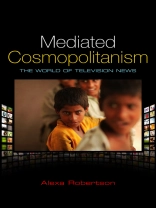Media power in the global era has to do with how people understand the world, their place in it, and their relation to the others who populate it. Making connections with distant places and people is the work of cosmopolitan imagination, which involves seeing the world through the eyes of others. In this book, Robertson engages with the growing literature on cosmopolitanism to address these issues, combining theoretical debates with an innovative empirical portal. Based on the analysis of over 2000 news reports broadcast on national and global channels and interviews with journalists and audience members, Mediated Cosmopolitanism illustrates that the same everyday stories about the world can take on different meanings in different cultures. It argues that if we are to understand how media actors may help people to make the connections that underpin a cosmopolitan outlook, attention must be paid to evidence that some actors may not, and that national broadcasters could be more active agents of cosmopolitanism than global channels.
Accessibly written, the book will be essential reading for advanced undergraduate and masters students, particularly of media studies, but also of sociology, politics and international relations.
表中的内容
List of figures and illustrations.
Acknowledgements.
Preface.
Chapter 1: Nourishing the Cosmopolitan Imagination.
Introduction.
Chapter 2: Reporting the World Back to Itself.
Comparing news coverage to domestic and global publics.
Chapter 3: The Woman with the Samsonite Suitcase.
Journalists, Viewers, and Imagining how it is to be the
Other.
Chapter 4: A Wave of Cosmopolitan Sentiment.
Television coverage of the Asian tsunami.
Chapter 5: Old Wars in News Programmes.
Cosmopolitanism, media and memory.
Chapter 6: Brushing Away the Flies.
Concluding thoughts.
References.
关于作者
Alexa Robertson is a Senior Lecturer in the Department of Political Science at Stockholm University












